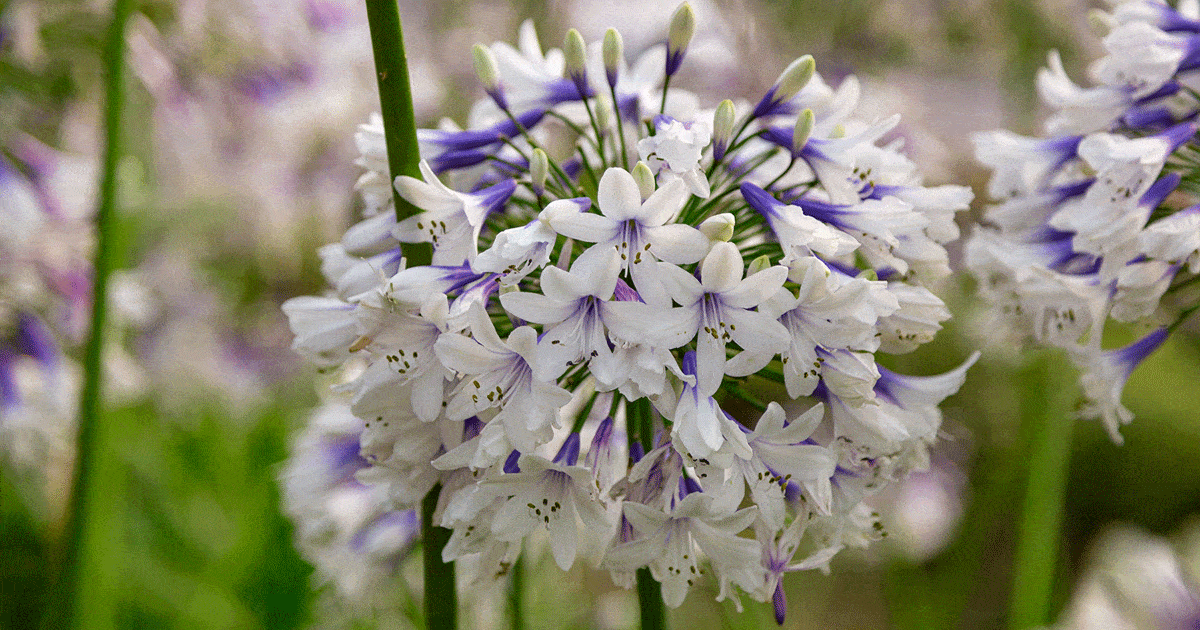Agapanthus Varieties: Selecting the Best for Your Landscape
Agapanthus Varieties: Selecting the Best for Your Landscape
Blog Article
Mastering the Art of Agapanthus Care: Essential Steps for Healthy And Balanced Development and Vibrant Flowers
In the realm of gardening, the cultivation of agapanthus stands as a gratifying undertaking for those who look for to support these elegant flowering plants. With their striking blossoms and elegant vegetation, agapanthus has actually recorded the attention of gardeners worldwide. Nevertheless, achieving optimal development and vivid blossoms calls for a nuanced technique that includes different vital actions. From selecting the best range to grasping pruning strategies, the trip towards cultivating thriving agapanthus plants is multifaceted and holds the essential to opening the complete capacity of these organic treasures.

Picking the Right Agapanthus Selection

When choosing the ideal Agapanthus range for your yard, think about factors such as climate viability, blossom shade, and growth habit. Additionally, consider the environment in your region to make certain the Agapanthus selection you choose can flourish in your particular problems. Comprehending the growth behavior of various Agapanthus varieties is crucial for appropriate positioning within your yard.
Perfect Planting Conditions
Thinking about the optimum ecological requirements is crucial for successful Agapanthus farming. Agapanthus plants are delicate to chilly temperatures and ought to be protected from frost during wintertime months.
To make certain healthy and balanced development and dynamic flowers, plant Agapanthus light bulbs at a deepness of concerning 2-4 inches and space them 8-12 inches apart. Mulching around the base of the plants helps retain wetness and subdues weed development.
Watering and Feeding Tips
Maintaining proper moisture degrees and providing crucial nutrients are key components in the care regimen for Agapanthus plants. It is crucial to strike a balance when it comes to sprinkling Agapanthus. These plants prefer regularly moist dirt however are prone to root rot if overwatered. Throughout the growing period, water deeply when a week, guaranteeing the dirt is well-draining to avoid waterlogging. In hotter climates or throughout durations of dry spell, even more constant watering might be needed to keep the dirt uniformly damp. However, minimize watering in the wintertime to stop waterlogged problems.
Fertilizing Agapanthus is important for promoting healthy websites development and prolific blooms. Apply a balanced plant food, such as a 10-10-10 formula, in the early springtime as new growth arises. By complying with these watering and fertilizing tips, you click for more can ensure your Agapanthus plants flourish and create dynamic, resilient flowers.
Trimming Strategies for Agapanthus
Pruning Agapanthus plants at the ideal times and with proper techniques is crucial for maintaining their health and advertising ideal development and flowering. The perfect time to prune Agapanthus remains in late winter months or very early spring prior to new growth emerges. Start by eliminating any kind of dead or yellowing leaves near the base of the plant. Cut them as close to the ground as possible without damaging the emerging shoots.
For flowered stems, wait until the blooms have perished and then trim them back to the base. This not just cleans the plant's look yet likewise motivates the advancement of new flower buds. Deadheading spent flowers can likewise reroute the plant's energy right into producing even more blossoms instead than establishing seeds. However, if you intend to collect seeds for propagation, leave some flowers to dry and mature on the plant.
Remember to utilize clean, sharp devices to make exact cuts and minimize the danger of presenting diseases. Agapanthus. Regular pruning will certainly assist maintain your Agapanthus looking neat and healthy and balanced while making sure a plentiful display screen of lovely blooms
Dealing With Common Insects and Conditions
After ensuring appropriate trimming methods for Agapanthus, it is crucial to deal with usual bugs and diseases that can influence the health and wellness and vigor of these plants. One typical pest that impacts Agapanthus is the Agapanthus gall midge.
Additionally, Agapanthus plants can experience from root rot if they are planted in inadequately draining soil. By being vigilant and taking prompt action against illness and pests, you can assist your Agapanthus plants grow and generate vibrant flowers. Agapanthus.

Verdict
In conclusion, understanding the art of agapanthus care entails selecting the right range, offering suitable planting problems, proper watering and fertilizing, suitable trimming strategies, and dealing with typical insects and illness. By adhering to these crucial actions, you can ensure healthy and balanced development and lively blooms for your agapanthus plants. Bear in mind to on a regular basis check and keep your plants to promote their overall well-being and durability.
To ensure healthy and balanced development and lively blooms, resource plant Agapanthus bulbs at a depth of about 2-4 inches and area them 8-12 inches apart. By adhering to these watering and feeding ideas, you can ensure your Agapanthus plants grow and produce vivid, durable flowers.
One common pest that impacts Agapanthus is the Agapanthus gall midget. In addition, Agapanthus plants can experience from origin rot if they are grown in improperly draining soil. By adhering to these essential steps, you can make certain healthy growth and vibrant blooms for your agapanthus plants.
Report this page